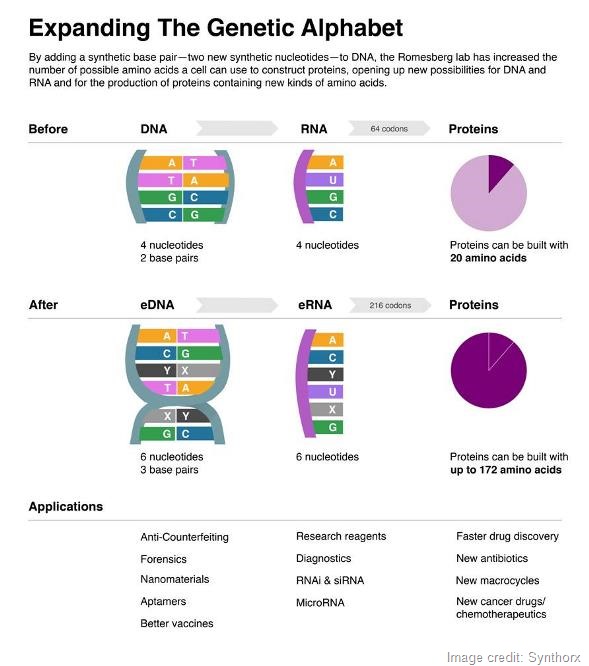As if altering the genetic code was not enough, now there might be a possibility to completely change the way it was written. Two new nucleotide bases have been created that were stably replicated in bacteria, expanding the possible number of base-pairs to 3 and increasing the coding capacity of DNA exponentially.
In his initial study published in Nature, Dr. Floyd E. Romesberg, a Chemistry Professor at the Scripps Research Institute in California, produced two nucleoside triphosphates called dNaMTP and d5SICSTP, which basepair via hydrophobic interactions instead of hydrogen bonding. A nucleotide transporter had to be expressed in the bacteria in order for their uptake, but once inside, DNA polymerases had no problem incorporating and amplifying the synthetic nucleotides, making copies of an introduced plasmid containing a single base-pair of the unnatural bases.
There were concerns initially that DNA repair mechanisms may work to remove these foreign bases, but that did not seem to be the case. The unnatural bases persisted for more than 3 days after he stopped supplying the bacteria with nucleotides at a retention of 45% (at 0 days, retention was in excess of 95% as suggested by termination of reads by Sanger sequencing) and 6 days at 15%. This led him to guess that their decay over time was due to replication-mediated mispriming instead of DNA repair.
In his most recent study in PNAS, Dr. Romesberg and his graduate student Yorke Zhang made improvements to the nucleotide transporter used, which previously induced some toxicity. They also further optimized one of the unnatural bases to be better incorporated by DNA polymerases, increasing copying efficiency. Finally, to prevent the decay of the unnatural bases over time, they used CRISPR to eliminate the DNA that had lost the unnatural bases. The resulting bacteria was able to indefinitely retain the unnatural bases under various sequence context.

Image taken from News Medical Life Sciences‘ interview with Professor Romesberg
The so-called semi-synthetic organism produced therefore uses 3 base-pairs and has 6 nucleotide types instead of 4. It remains to be seen whether its DNA can be transcribed into RNA and then more importantly into protein. But it holds the potential to greatly change the way things are currently done – imagine what we could do with 172 amino acids instead of 20!